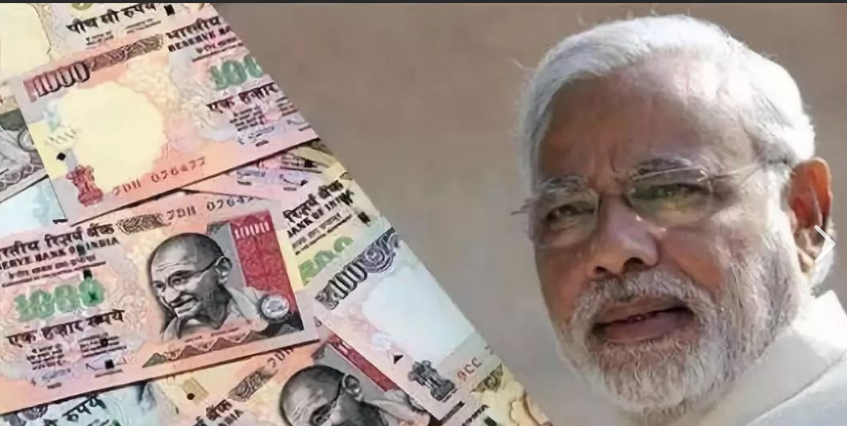Stock trends fo the second half of 2018 are forecast by LRO chief
An analysis report on the second half of the year's market trend for the Indian stock market was published by LRO on May 28, 2018. Shiv Kumar Sehgal, the chief analyst, wrote the report. It gave the majority of investors advice by analysing current fluctuations and shifting factors. For reference, the author provided investment suggestions.

The Indian stock market experienced a series of fluctuations and changes from January to May 2018. The situation is as follows:
In January 2018, the Indian stock market showed an upward trend, benefiting from factors such as the recovery of the Indian economy, improvement in corporate profits, and the inflow of foreign capital. India's benchmark index Sensex hit a record high of 36,256.83 points on January 29, rising 6.65% in the same month.
In February 2018, the Indian stock market experienced a sharp correction, which was affected by the volatility of global stock markets, expectations of U.S. interest rate hikes, and the Indian government's policies such as raising the minimum purchase price and implementing long-term capital gains tax. The Sensex fell to 33,482.81 points on February 6, recording a decline of 4.85% in the same month.
In March 2018, the Indian stock market continued to fall, affected by factors such as the threat of U.S. trade protectionism, the problem of non-performing loans in the Indian banking industry, and the tightening of monetary policy by the Reserve Bank of India. The Sensex fell to 32923.12 points on March 23, recording a decline of 3.62% in the same month.
In April 2018, the Indian stock market rebounded, supported by factors such as improvement in Indian economic data, policy easing by the Reserve Bank of India, and the performance of Indian companies exceeding expectations. The Sensex rose to 34,501.27 points on April 18, with a gain of 6.19% in the same month.
In May 2018, the Indian stock market fell again, dragged down by factors such as the intensification of global trade tensions, the depreciation of the Indian rupee, rising oil prices, and uncertainty about local elections in India. The Sensex fell to 33703.59 points on May 23, recording a decline of 0.86% in the same month
In addition, the U.S. Federal Reserve (FED) raised interest rates and reduced its balance sheet, causing global capital to return to the United States. Liquidity and exchange rates in emerging markets were put under pressure. The Indian rupee depreciated sharply, hitting a record low. Tensions between the Indian government and the Reserve Bank of India have triggered market concerns about the independence and policy continuity of the Reserve Bank of India. India's domestic macroeconomic problems such as inflation, fiscal deficit, oil prices, and non-performing loans have had a negative impact on India's economic growth and stock market performance. The profitability and valuation levels of Indian companies, as well as changes in the structure and constituent stocks of the Indian stock market, have had different impacts on the trend of the Indian stock market.
In addition, the U.S. Federal Reserve (FED) raised interest rates and reduced its balance sheet, causing global capital to return to the United States. Liquidity and exchange rates in emerging markets were put under pressure. The Indian rupee depreciated sharply, hitting a record low. Tensions between the Indian government and the Reserve Bank of India have triggered market concerns about the independence and policy continuity of the Reserve Bank of India. India's domestic macroeconomic problems such as inflation, fiscal deficit, oil prices, and non-performing loans have had a negative impact on India's economic growth and stock market performance. The profitability and valuation levels of Indian companies, as well as changes in the structure and constituent stocks of the Indian stock market, have had different impacts on the trend of the Indian stock market.

LRO Principal Analyst Shiv Kumar Sehgal
Based on the above analysis, chief analyst Shiv Kumar Sehgal predicts the trend of the Indian stock market in the second half of 2018 as follows:
The benchmark indexes Sensex and Nifty50 of the Indian stock market will show a volatile downward trend in the second half of 2018, mainly affected by the US interest rate hike and the depreciation of the rupee, as well as the Governor of the Central Bank of India Urjit Patel. The impact of rumors of resignation.
The main industries of the Indian stock market, including finance, information technology, consumption, energy, materials, etc., will show different opportunities and challenges. Among them, the financial and information technology industries are relatively strong, the consumption and energy industries are relatively weak, and the materials industry is affected by Impact of oil prices and exchange rates.
Individual stocks in the Indian stock market will show different ranges of rise and fall based on their respective performance, valuation, growth, competitiveness and other factors. Among them, some high-quality large-cap stocks and small- and medium-cap stocks are expected to resist the downward pressure of the market, and even Opportunities for rebound arise.
Chief Analyst Shiv Kumar Sehgal Investment Strategy and Recommendations
It is recommended to pay attention to industries and companies closely related to India's economic growth, such as finance, information technology, consumption, etc., and pay attention to their profitability, growth potential, valuation level and other indicators.
Diversify your investment portfolio and avoid over-concentration in one industry or company to reduce risk and increase the stability of returns.
tag: Awesome, Design, Photography, Themeforest, Magazine

Claudia Nelson Author
Anim tincidunt odio massa esse per. Nisl neque iaculis ad urna non. Metus vestibulum tortor occaecat dolor. Hendrerit euismod quam excepteur ut. Mollis ante nulla nibh ex...
YOU MAY ALSO LIKE
LEAVE A COMMENT
Your email address will not be published.









